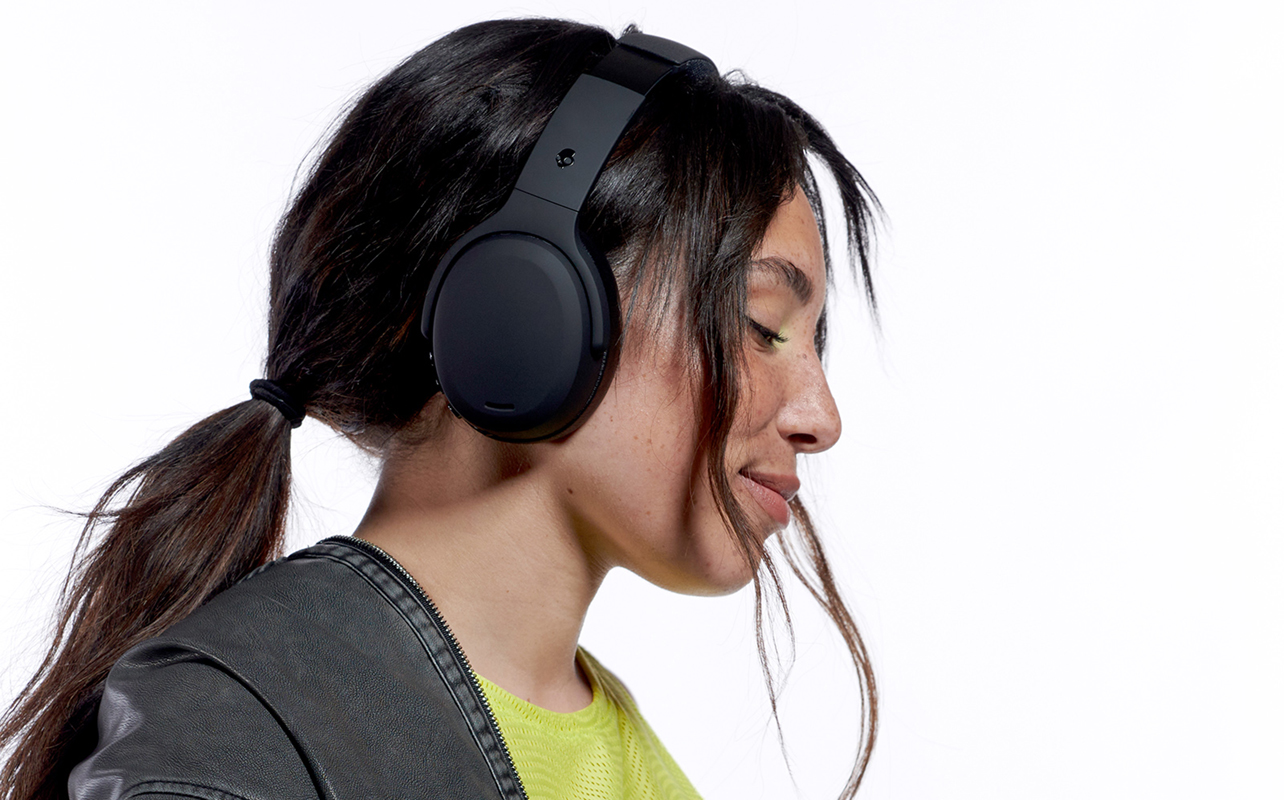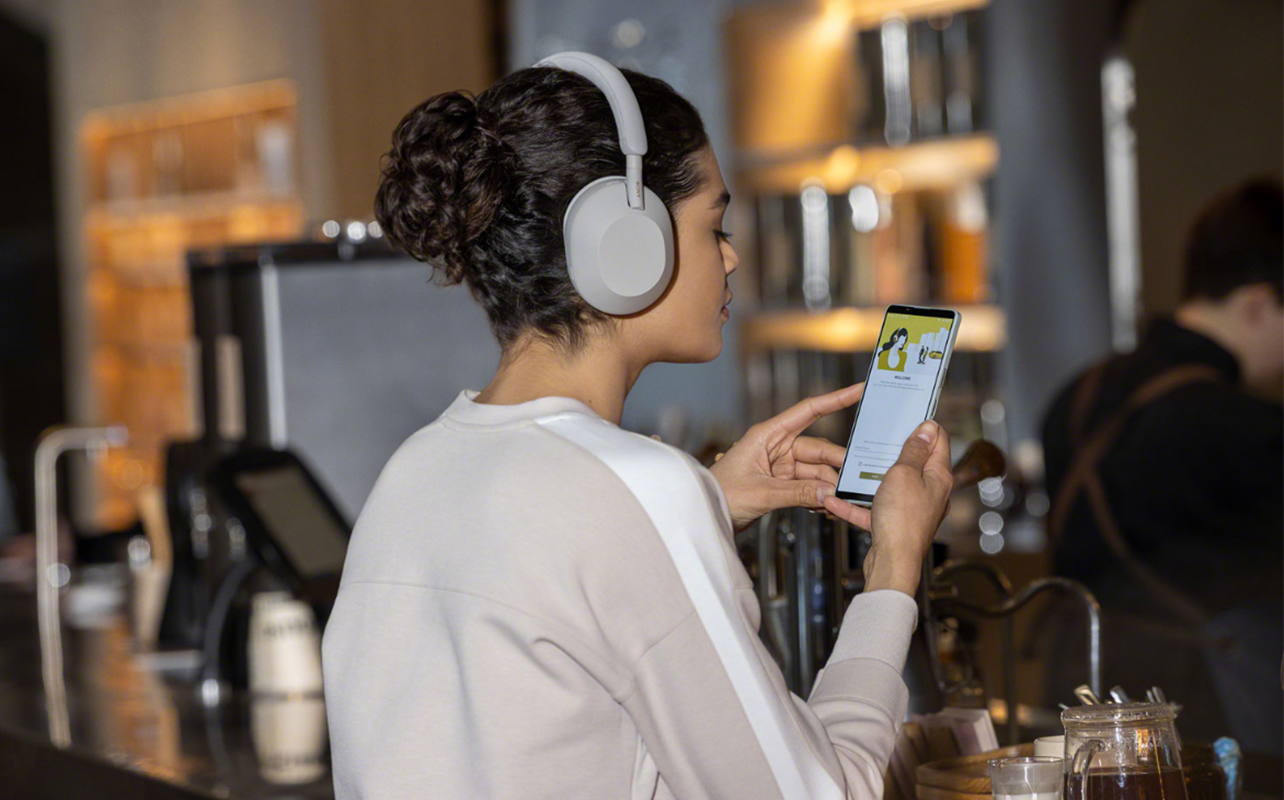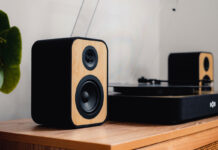
Headphones can get pretty personal for students. They’re a great companion when you’re listening to old favourites or exploring new tunes. At the same time, they can also help you focus while drowning out distractions. Background noise comes in various forms at school or on campus, from the bus hissing, loud chattering, clacking keyboards, video games, and dorm parties—the list can go on. If you wear your headphones throughout the day, they have to feel comfortable, play quality audio, and last long enough to make them enjoyable whenever you use them.
What students should look for in headphones
Today’s headphones are more about a combination of technologies that do more than just play music.
ANC vs transparency
At this point, active noise-cancellation (ANC) is a standard feature on headphones at varying price points (at different efficacy, mind you). How else to block out background noise when studying in a dorm, library, or shared space? The opposite of that—transparency or ambient mode—pipes in background noise to help you stay aware of your surroundings, so you can also stay safe walking across campus or waiting for transit.
Comfort
None of that matters if your headphones aren’t comfortable. Brands try hard to find the best possible fit for as many people as possible but it’s just as likely that a pair that feels right for someone else may not feel the same on your head and ears. When you’re wearing over-ears for longer stretches, lighter weight and softer cushioning can make a tremendous difference.
Passive isolation
Passive isolation binds together sound quality, noise cancellation, and comfort. The better the seal around your ears, the more music and less background noise you hear. This is the reason why ANC can work as well as it does.
Microphone clarity
Any learning environment—whether online, hybrid, or in-person—needs clear communication. What good is a Zoom call or online collaboration if the audio isn’t good? A muffled or distorted mic leads to confusion, awkward repetition, and shorter attention span. With better clarity, your voice cuts through the noise without anyone wondering what you said. This is also a big deal when working on projects with others or recording something on your own. Not all mics are made equal on headphones, so try to look out for brands that have a reputation for clarity in that regard.
Battery life
It may surprise you that the biggest and most recognized audio brands aren’t always the best in battery life. Some might only manage half the time per charge others do, so if that truly matters to you, take a good look at how long each is supposed to last. Pay particular attention to rated battery life with ANC on and off. And remember that brands base rated battery levels on the default volume out of the box. The more you raise it, the more battery it needs to keep playing that way. That being said, there’s real convenience in not having to worry about recharging all the time. Hours of music, online classes, study sessions, and commutes can go by before you need to top up again. No low-battery anxiety to get in the way of your schedule.
App integration
Most headphones available today work with a companion app that lets you adjust all sorts of settings. These can be audio-related by way of an equalizer, noise cancellation, spatial audio and even Bluetooth codecs, or they can be for customizing different aspects of how the headphones work (i.e. controls, connectivity). It’s well worth exploring the app if it’s available to you because, well, why wouldn’t you want to make these feel more personal? When headphones can adapt to what you prefer, it’s a lot more satisfying to see them work your way.
What about wireless earbuds?
The same principles largely apply to earbuds, save for the obvious physical differences. Unlike over-ear headphones, earbud comfort lies in how they nestle into your ear. If that’s a problem, you can always consider open-ear earbuds as an alternative based on how they don’t make actual contact with your ear canal.
Small and easy to carry by just putting them in your pocket, earbuds super convenient to take with you wherever you go. And, there’s a chock full of compelling choices, which include those with great Bluetooth codec support, like aptX Adaptive, LDAC, and LC3 for hi-res audio playback from sources who offer it. The same principles above for over-ear headphones also largely apply here. Comfort, clarity, app integration—they all matter when putting on a pair of earbuds, too.
The one challenge with earbuds is battery life, but you can find great pairs that can run for at least six hours per charge, even with ANC on. The good news is the cases double as charging cradles, ensuring you have juice every time until the case itself needs a jolt.
Best headphones by use case
Given that each day at school or on campus may not be the same, you want to be ready for what comes next. You’ll probably find yourself studying in a library for hours one day, then going over a group project in a Zoom call the next. You just want to match the important features and functions with your own routine.

Studying in shared spaces
Anytime you need to study, focus, and leave all the noise behind, a prime fit and good noise cancellation are huge components. Premium ANC headphones like the Sony WH-1000XM6 or Bose QuietComfort Ultra are renowned for delivering both, helping you avoid audible distractions and stay focused for hours at a time.
Online classes and Zoom calls
Online classes and Zoom calls need clarity to make them productive for you, so you’ll want headphones or earbuds that can make voices sound clear on both ends. The Jabra Evolve2 65 Flex are a good example of a headset made just for that. Otherwise, the Anker Soundcore Space Q45 is a solid choice, courtesy of its mic performance and multipoint features that allow you to jump between your laptop and phone with ease.
Commuting across campus
If you’re commuting a lot or your bag is too full already, maybe earbuds are the answer. The AirPods Pro 2 are fine, but also consider budget-friendlier choices, like the Sony WF-C510 and Nothing Ear (a) as alternatives more than capable of getting the job done—including with better sound quality.
Budget-friendly picks
A tighter budget actually works out quite well when there are great headphones under $150 that don’t cut corners. The Skullcandy Hesh Evo won’t give you ANC but they do have excellent passive isolation and booming sound. If noise cancellation matters to you—and your budget allows for it—the JBL Tune 760NC are robust and comfortable enough to get you through plenty of study sessions and commutes.
Study-by-day / gaming-by-night
Ah, the studying/gaming conundrum that bedevils so many students out there. There are headphones for that. Hybrid ones, like the SteelSeries Arctis Nova 7 or Logitech G435 are different but definitely worth a shot. You get low-latency wireless, detachable mics, and enough comfort for all-day wear to cycle through your Discord chats, lecture streams, and late-night gaming marathons.
Longer listening periods will tell you a lot about overall comfort, and that’s where a nice, yet low-clamp fit is the ideal seal to keep wanted sounds in and unwanted ones out. That same principle applies in louder places, where ANC and longer battery life can feel like lifesavers in more chaotic dorms or cafes. If going to the gym is part of your routine, look for headphones that have a reputation for withstanding some sweat and tough physical routines. It’s not common for over-ear pairs to have IP rating but it is for wireless earbuds.
How we decide what’s best
At Best Buy Canada, curating a “Best of” or “Top X” list is a thoughtful and transparent process. We evaluate products based on brand reputation, popularity, customer interest, and relevance within their category. Our bloggers then bring deep product knowledge and hands-on experience to help identify the best options for you.
Testing goes far beyond unboxing—products are used in real-world scenarios, with our bloggers putting themselves in your shoes to better understand how a device or accessory performs day to day and whether it meets expectations. Where possible, they compare similar models and assess key factors such as design, performance, and category-specific features to offer well-rounded, informed recommendations. For niche or new product categories where broader hands-on testing might not be possible within that category as a whole, our skilled bloggers evaluate the products using every objective method they can.
In some cases, a blogger may not have direct experience with a specific product. When that happens, they draw on broader expertise, such as time spent with comparable items, an understanding of the brand’s current lineup, and its overall reputation. We also draw on insights from Best Buy’s in-house category experts and aggregate feedback from both trusted reviewers and customer ratings to make the best selections.
We’ll always be clear about the basis of our recommendations—whether they stem from first-hand testing or extensive research. Authenticity matters to us. Every “Best of” guide is built on objective insights, product knowledge, and a commitment to helping you make confident buying decisions.
Wired vs wireless: which fits your campus life?
Depending on where you go to school, you may run into situations where you can’t use wireless headphones of any kind. Maybe it’s for security reasons or just a rule the school enforces. Either way, you could always try wired headphones as a backup option where there’s zero latency and no real need to worry about cutoffs or connection interference. Still, it’s just hard to match the sheer convenience wireless headphones and earbuds offer.
| Feature | Wired headphones | Wireless headphones |
| Battery life | No charging needed | Typically 6–30 hours (plus charging case for earbuds) |
| Lag/latency | Zero lag—ideal for exams and video editing | Slight lag possible, reduced with aptX/LC3 support |
| Campus rules compliance | Safe choice for classrooms or labs | Check with profs or syllabus for any restrictions |
| Device compatibility | Works with laptops, desktops, and lab computers | May need Bluetooth dongle on older devices |
| Portability | Tangle-prone, less compact | Fold-flat or pocketable, depending on design |
| Charging needs | None | Needs regular charging or quick-charge support |
| Convenience | Plug-and-play, but limited mobility | High mobility, hands-free multitasking |

Care tips to make headphones last all semester
Like any piece of tech, treat it well and it should keep working for you until it just no longer can. Clean your headphones regularly, even if you don’t work out in them. All you need is a soft cloth and some 70% isopropyl alcohol to do the job right. The added bonus is you’re basically sanitizing them at the same time. Some headphone brands, however, caution against using alcohol for cleaning as it can damage certain materials. Remember to check whether it’s safe.
Earbuds already come in a case, so you don’t need to worry about that, though you do need to be careful not to misplace or lose the buds themselves. Over-ears are harder to lose, but they need protection, and that’s why it’s best to keep them stored in a protective case. All the better if one comes in the box.
Don’t make a habit out of keeping them charged overnight all the time. It degrades the battery after a while. Top them up as needed and only charge them to full when you’re around to unplug once they’ve done that. Finally, take the time to read the warranty and what it covers. You will likely see that any water damage isn’t covered, nor is damage due to negligent use. If you want extended coverage or replacement parts (like ear pads), find out if those are available first.
FAQs
1. Are noise-cancelling headphones allowed in lectures?
Generally, yes. Most colleges allow them outside exam rooms, but you may have to remove them during class. Keep transparency mode on so you don’t miss any instructions.
2. What battery life is best for day-long classes?
Look for 30 hours or more for over-ear models, and at least 6 hours per charge for earbuds. A quick-charge feature that delivers three hours of playback in ten minutes is ideal for busy schedules.
3. Can a gaming headset double as study headphones?
Absolutely. Lightweight gaming headsets, like the SteelSeries Arctis Nova 7, can serve both purposes, offering great mic quality and comfort for everything from Zoom calls to writing essays.
4. Does a water-resistance rating matter for campus life?
Only if you plan to run in the rain or regularly exercise outdoors. Otherwise, an IPX4 rating is usually more than fine for just using them indoors in standard situations.
Find the best headphones for you
If you think about it, headphones are as much a study tool as your laptop or notebook. You could be chasing the solitude and clarity necessary to get something done, or to simply focus on the task at hand. As long as you’re comfortable and engaged, the rest is really up to you every time you wear them.
Ready to make a move? Start by checking out headphones on sale to catch a great deal.





